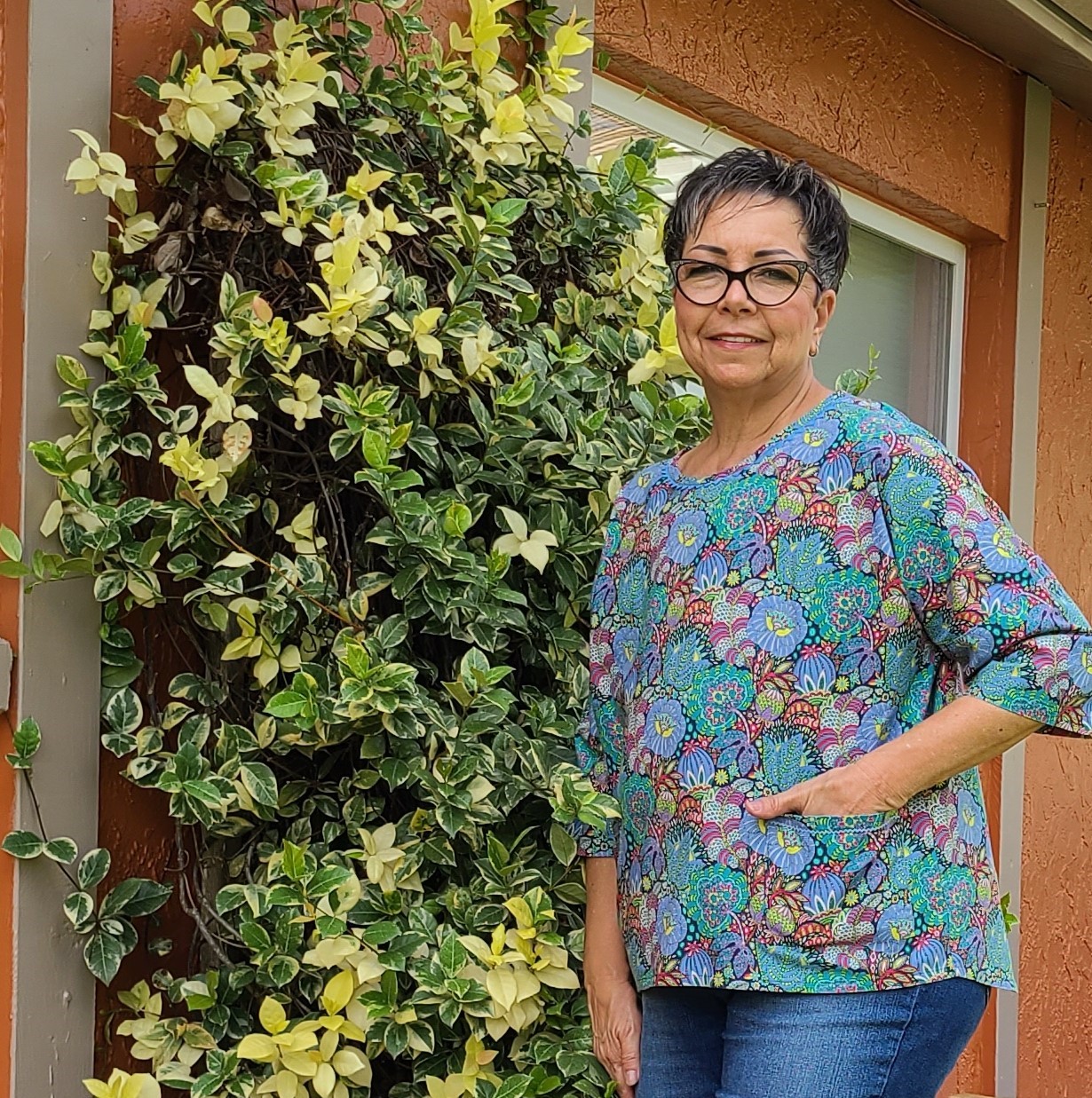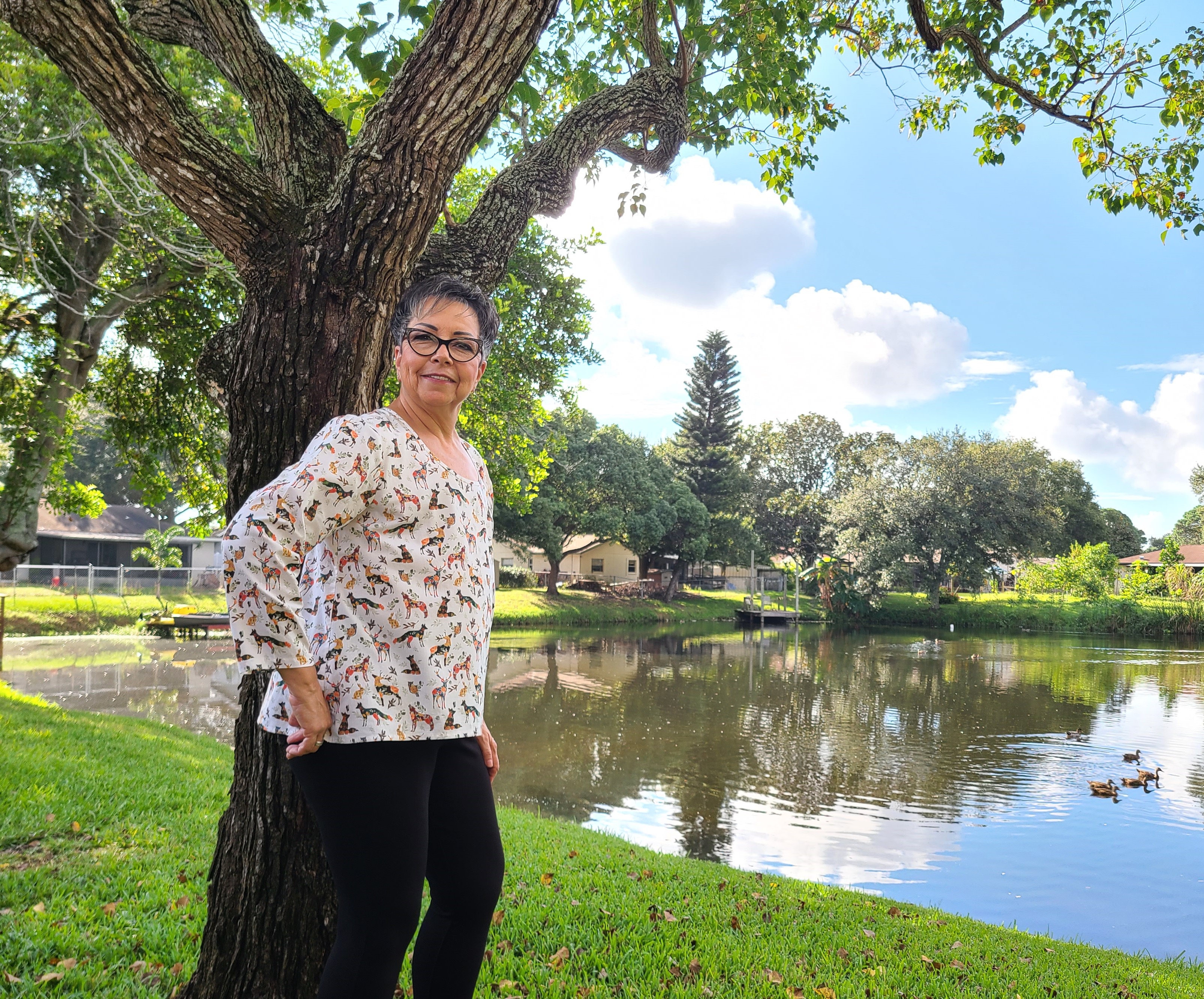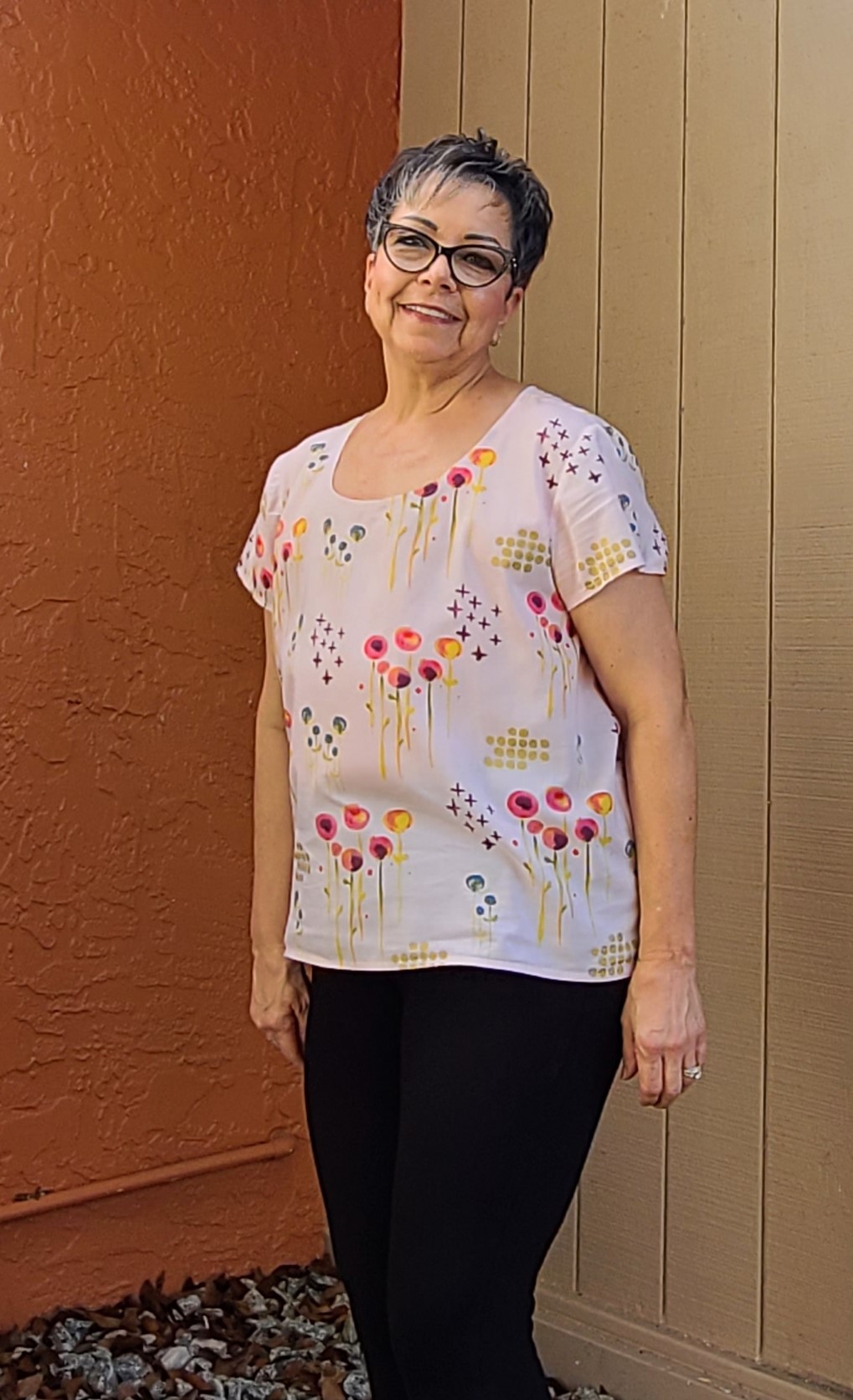Hello there! I am Alison O’Grady, a Maker with Janome America.
 October is a very special month for me because it is National Breast Cancer Awareness Month. I’d like to share with you how my battle with breast cancer has altered the way I create my hand crafted wardrobe to be stylish and full of my own style!
October is a very special month for me because it is National Breast Cancer Awareness Month. I’d like to share with you how my battle with breast cancer has altered the way I create my hand crafted wardrobe to be stylish and full of my own style!
I was diagnosed in 2003 with breast cancer. It devastated me for a number of reasons including that I didn’t have a family history. I had just gotten a new lease on life and this was an incredible setback, or so I thought. Then I decided to take charge of my future starting with the things that brought me so much joy such as sewing.
My breast cancer was Stage 3 with lymph node involvement. My treatment would require multiple surgeries including a bi-lateral mastectomy, chemotherapy, radiation and probable reconstruction and 5 years of daily drugs that had scary side effects. Was I up for it?
Let’s back up a bit to before the cancer. I just met Chris through a blind date. He had been widowed for years, but was ready for an introduction. I quizzed him over the phone first that proved he could handle my personality! A fabulous first date told me that this was going to be something very special. After a period of months, I moved 2 hours away from my job, family and friends to pursue my second chance at happiness.
But then I discovered the lump on my right side of my chest. I had no health insurance. I hadn’t been able to find work. Even though we did have intentions of getting married eventually, this moved it up under the circumstances. Chris insisted that I get the care I deserved and we would find a way.
The hospital took great care of me and of the mammogram. Then I saw the surgeon the next day. She said those 3 words that no one ever wants to hear, “You have cancer.” Well, after that appointment, we knew we needed to tell my mom and some of my family members in person just what was ahead for me. At the family dinner to break the news, I said that Chris and I needed to get married, “in a hurry”. Then I quickly announced that I was not pregnant, especially at 43 years of age. I think my adult daughter was quite relieved about that revelation! Now I needed to plan a wedding to get our plan in action.
It was an incredible wedding complete with more love, support and pink ribbons than I could have ever imagined. We didn’t need to plan a honeymoon because we knew that everyday together after cancer would be our lifelong honeymoon.
A few days after the wedding, there would be the first surgery of 3, then chemotherapy treatments. I began to think that I should get busy creating the best wardrobe for chemo with matching tote bags, after all cancer is as good a reason as any to get sewing a new wardrobe. Not to mention matching hats for when my hair was gone. I wasn’t going into the chemo treatment area without makeup, jewelry and stylish clothes! I was going to search for patterns that were going to flatter me differently, with a flat chest as I had a bi-lateral mastectomy. I searched out patterns that didn’t have bust darts. Patterns like tunics with interesting necklines and bodices were ideal. I could use some contrasting fabrics, embroidery, piping and on and on went my creative mind. I fired up my Janome Memory Craft 8000 and started sewing. It helped so much to keep my mind busy. The satisfaction that comes with making something to wear yourself, was just what I needed. I stayed away from wrap dresses and wrap tops. I knew that type of style would draw attention to what was no longer there. And that was okay. I WAS.

I did do quite well with my chemo, bed-rest, radiation and following doctor’s orders. My sewing kept me happy and productive for every occasion when I would need to go out.
When I was enrolled in the Master Seamstress Program back in 1995, one thing said by one of my instructors always stood out in my mind. “Choose a simple design in your pattern style and let the fabric do the talking.” That seems to continue to be the key to my success in sewing after breast cancer. People aren’t attracted to my body, whether or not I have a bust, it is the fabrics and the way I showcase them on my body via design and pattern. There have been stitch outs that don’t make it out of the studio, but they become learning blocks. I either donate or re-purpose. I don’t let my sewing mishap defeat me. If breast cancer didn’t defeat me, an attempt at a different style of garment sure won’t. Chock it up to experience and continue on.
After all of my treatments, it was time for the follow-up with my plastic surgeon.I had many conferences with my plastic surgeon about reconstruction as it is such a personal choice. He said that I would look fabulous in my tops and t-shirts after reconstruction. My response was, “Doctor, I don’t look good in a pair of jeans so I guess I’m all set with not having the reconstruction!” He agreed with a big smile and wished me health and happiness.
I am still cancer free and I live everyday to the fullest. I’ve led many American Cancer Society events, spoken publicly about my experience, and encouraged other women who reach out to me after their own devastating cancer diagnosis.
My new husband, Chris was diagnosed with prostate cancer 4 months after my diagnosis. He has since had melanoma where I watched the doctor stitch his temple up after removing his cancer. During the procedure, I mentioned to the doctor that she needed to pull those stitches tighter! Well we all needed that laugh. Chris’s prostate cancer returned last year, but he is now in remission. We were certainly meant to be together.
I have added links to some of my favorite patterns, but there are many! Look for fabrics that you just love.
Wiksten Shift Dress/Top
Alder Dress
Charlie Caftan
Everyday Dress
Bondi Top
Cuff Top
Fern Top
Remy Raglan
The Florence Top
There are many tutorials out there about how to remove a bust dart in a bodice front pattern piece. If you have a pattern that you just love that has darts, use one of those to create a muslin and see if you like the results.

Maybe my story or breast cancer doesn't affect you directly. Perhaps you can offer encouragement to someone you know or maybe sew for them.
I’ve recently had the BracAnalysis to see if I carry the breast cancer gene. I do not but I still got breast cancer. Please get your mammogram. Encourage your friends to as well. It saved my life. ♥
Thank you for reading about my journey. I truly believe my work is not done on this earth. I have tons more sewing to do!